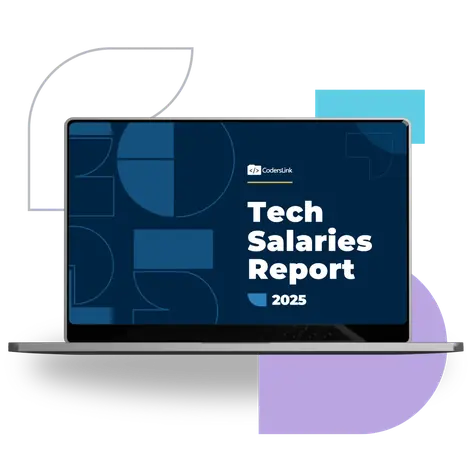
Hiring top-tier software engineers has become an essential step for companies wanting to stay ahead in today’s competitive tech industry. Offering an attractive and competitive salary package is key to attracting the best talent—especially when near-sourcing from regions like Mexico, where companies can balance cost-efficiency with high-quality tech expertise.
This article dives into salary trends, the key components of a winning compensation package, and how to effectively structure offers for software engineers.
1. Understanding Software Engineer Salaries in the U.S. vs. Mexico
Salary expectations for software engineers vary widely depending on location, experience, and specialization. Let’s compare:
• In the United States, software engineers earn an average of $139,702 per year. However, engineers in tech hubs like Silicon Valley or New York often earn 30-40% more than the national average.
• In Mexico, the average salary for a senior software developer is significantly lower but remains competitive within the region, at around $60,804 per year (based on the 2024 Mexico Tech Salaries Report). This stark difference makes near-sourcing an attractive strategy for U.S. companies looking to maximize value.
Key Roles in Demand:
• Backend engineers are leading the pack in interview requests, followed by full-stack engineers and frontend engineers. Engineers proficient in technologies like React, Node.js, Java, Python, and TypeScript are in particularly high demand across both regions.
2. Structuring Competitive Salary Packages
To effectively attract top software engineers, employers need to consider several components in their compensation packages:
Base Salary
This is the foundation of any salary package and should reflect an engineer’s experience and skillset. Based on seniority, the following base salary ranges apply:
- Junior Engineers (0-2 years):
- U.S.: $85,000 – $95,000
- Mexico: $1,500 per month
- Mid-Level Engineers (2-6 years):
- U.S.: $95,000 – $125,000
- Mexico: $2,037 per month
- Senior Engineers (6-10+ years):
- U.S.: $130,000 – $155,000
- Mexico: $4,500 – $5,000 per month
Bonuses and Variable Incentives
• Performance Bonuses: On average, bonuses in the tech sector can range from 10-15% of an engineer’s annual salary. In Mexico, performance incentives are becoming more common, particularly in high-growth companies.
• Equity Compensation: Offering stock options or Restricted Stock Units (RSUs) is an increasingly popular way to motivate and retain top talent, especially in startups. Equity can be tied to performance milestones or company growth, allowing employees to share in the company’s success.
3. Perks & Benefits: Beyond Base Salary
While financial incentives are essential, non-monetary perks often sway top candidates toward one offer over another. Here are some perks that software engineers in Mexico and the U.S. value:
• Flexibility and Remote Work:
With the rise of remote work, flexibility is a top priority for engineers. Offering remote-first positions or hybrid work models is a key perk for many developers today. According to a survey, 72% of tech professionals expect remote work to continue long-term, making this a key decision factor.
• Health and Wellness Benefits:
Offering health benefits is standard, but additional perks like gym memberships, mental health support, or free meals add significant value to the offer. In Mexico, companies like Google and IBM have embraced these perks, which are particularly attractive for senior professionals.
• Learning and Development Opportunities:
Developers often look for roles that support their continuous growth. Companies that invest in upskilling, offering certifications, paid courses, or conference attendance tend to attract candidates who value career progression.
4. Regional Salary Variations in Mexico
Salary levels in Mexico can vary depending on the region. The 2024 Mexico Tech Salaries Report highlights these regional differences, noting that:
• Mexico City: The country’s leading tech hub, where salaries for software developers can reach $5,067 per month due to the higher cost of living.
• Guadalajara: Often referred to as Mexico’s Silicon Valley, Guadalajara offers competitive salaries, around $3,827 per month, with a lower cost of living compared to Mexico City.
• Monterrey: As an industrial tech center, Monterrey salaries for developers are approximately $3,180 per month.
Companies can take advantage of these regional salary differences when deciding where to source remote tech talent or even set up offices.
5. How to Attract and Retain Top Software Engineers in Mexico
Attracting top-tier engineers requires more than just a high salary. Here are additional strategies to make your offer stand out:
• Offer Career Growth:
Providing clear paths for advancement and opportunities for learning and development makes your company attractive to engineers looking to expand their expertise. Consider offering mentorship programs and rotational positions within teams to broaden their experience.
• Emphasize Work-Life Balance:
Engineers increasingly value a healthy work-life balance. Flexible hours, unlimited vacation policies, and remote-first work cultures help appeal to candidates seeking flexibility. This is especially attractive in regions like Mexico, where the ability to work remotely for U.S. companies while living in affordable areas is a huge draw.
• Leverage Near-Sourcing Advantages:
Near-sourcing from Mexico offers U.S. companies a competitive advantage by accessing high-quality engineers at affordable rates. Hiring developers in Mexico ensures time zone alignment, enabling real-time collaboration with U.S. teams while minimizing travel costs.
Final Thoughts
Building a competitive salary package is not just about offering the highest number—it’s about structuring a package that offers value to both the company and the employee. Near-sourcing talent from Mexico allows companies to attract top software engineers without inflating their budgets.
By blending attractive base salaries, performance incentives, and a robust set of benefits and perks, companies can stay competitive in the talent war while reaping the benefits of nearshoring.
Is your company ready to build a remote tech team or hire software engineers in Mexico? Let’s connect, and we’ll help you find the talent you need to take your business to the next level.


